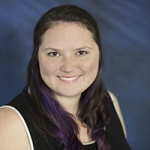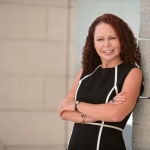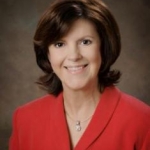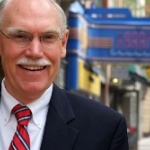local arts network
2015 Honoree -
Biography
Richard E. Huff has gained a national reputation for his work at the local, state, and national levels as Executive Director of the Irving Arts Center in Irving, Texas.
Richard E. Huff has gained a national reputation for his work at the local, state, and national levels as Executive Director of the Irving Arts Center in Irving, Texas.
A nationally known leader in the local arts agency community, Robert Bush joined the Arts & Science Council (ASC) in 2000. In his current role, he is responsible for ensuring ASC’s annual goals and long-term objectives are achieved by setting the strategy and vision for the organization, as well as the tone for an organizational culture that supports goals and strategies. He also ensures the organization has the necessary human capital to achieve its goals, while directing and overseeing the tactical activities designed to produce the desired results and leading effort
Kate D. Levin is the commissioner of the New York City Department of Cultural Affairs. In this role, she directs cultural policy for New York City, supporting and strengthening nonprofit cultural organizations throughout the five boroughs through public funding, technical assistance and advocacy. Prior to her appointment, Levin taught at the City College of New York/CUNY and has worked at several New York City cultural organizations.


On February 8, Americans for the Arts launched our Arts Mobilization Center, which serves as a hub for all of our position papers. The Mobilization Center is available to the public and is intended to be a tool to help you advocate for the arts. Then, to help our members be the most effective advocates they can be, we launched a regular member briefing series on March 23. These are 30 minute calls available exclusively to members around a specific issue statement, topic area, or program update. During each call, Americans for the Arts senior staff members and I provide background on a given topic, then we take your questions live!
Read More

On a trip to teach and learn about cultural districts in South Carolina, I was struck by the desire of each district to develop relationships with the others and to work together to promote each other’s cultural assets and build knowledge about the state across the state.
Read More

On April 19, the National Endowment for the Arts hosted a convening of national thought leaders and practitioners to consider the increasing importance of work related to natural disasters, man-made disasters and civil unrest. “Readiness and Resiliency”: Advancing a Collaborative and National Strategy for the Arts in Times of Emergencies.
I was excited to be attending as an observer on behalf of the National Coalition for Arts Preparedness and Emergency Response. I had attended a preconference through Grantmakers in the Arts in 2014 in Houston. The preconference focused on the examination of the readiness, response, and emergency support systems for artists. It featured three artists and really centered around how the arts community responds to the effect of natural disasters on the lives of individual artists. It was, to say the least, so completely inspiring that I found the ideas and content integrating itself into the conversations I had with the local community in Columbus upon my return and for the time following.
Read More

With the start of a new year comes the start of a new General Assembly session, at least in my home state of Virginia, and also for three-quarters of our states’ legislatures. And for our state so begins the battle for increased funding for our state arts council—the Virginia Commission for the Arts. This Wednesday, arts leaders and supporters from across our Commonwealth will gather for Arts Advocacy Day when we will meet with our state representatives to plead our case. And just what is that case?
Read More

Happy New Year from all of us at Americans for the Arts! Together our work has helped transform America’s communities through the arts.
Share with ARTSblog readers one way the arts helped transform your community in 2015, in the comments below and on social media! Tag us @Americans4Arts.
Congratulations on your success in 2015! We look forward to an exciting and productive New Year.
Read More

How does a hardworking artist become an economically thriving one? In today’s art world, talent alone is rarely enough. Without sufficient financial support, most artists will struggle to get ahead—or even stay afloat—but direct funding for the arts is getting increasingly harder to come by. In 2014, individual artists received less than 5% of the grant dollars awarded by nonprofits or state arts agencies for arts-related work [Sources: The Foundation Center; National Assembly of State Arts Agencies]. What’s more, the vast majority of support that individual artists receive from non-governmental institutions is filtered through fiscal sponsors, a step that not only creates an additional obstacle for artists, but also cuts into the total dollar amount that they receive.
Read More

In January, the United States Urban Arts Federation (USUAF) held its winter meeting in New Orleans (NOLA). A program of Americans for the Arts, USUAF is comprised of executive leaders of the local art agencies (LAA) in the 60 largest cities in the United States. USUAF serves as a forum to have a peer-to-peer knowledge exchange around best practices and contemporary issues facing LAAs in their respective communities. We learn from each other, and meeting locations serve as case studies that demonstrate the unique role that the arts and LAAs serve in urban life.
Read More

With the arts advocacy season fully upon us, the following is my updated “10 Reasons to Support the Arts.” Changes this year include updating #3 with the BEA’s new Arts in the GDP research, #8 to include a statement about the benefits of the arts in the military, and #10 includes the new Creative Industries data (now current as of January 2015).
This is just one of many arrows to include in your arts advocacy quiver. While it’s a helpful one, we know there are many more reasons to support the arts. What are yours? Please share your #11 (and more!) in the comments section below. What a great collection we can build together.
Please feel to share and post this as you like. You can download a handy 1-pager here.
Read More

This week’s blog salon on Cultural Districts and Communities: Catalysts for Change explored how cultural districts are improving, engaging, and sometimes changing their communities. Kicking off the salon, I introduced our new tool - the National Cultural Districts Exchange, which is a suite of online tools and resources to provide research and information about cultural districts. This new resource is meant to be an exchange of ideas, information, and resources - and this blog salon supplemented this new tool with great viewpoints and unique perspectives on cultural districts.
Read More

There are two questions that I frequently hear when asked about arts and cultural districts: what exactly does it mean to be a cultural district, and how does my community go about designating one?
These are big, complicated questions because there are so many variables! Finding meaningful and helpful answers, analysis, and insight to these questions just got easier, thanks to the National Cultural Districts Exchange, a free online resource. Now, you can find comprehensive information on the formation of cultural districts -- including DIY templates, with sample legislation, and guidelines covering all aspects of district designation - all in one place.
Read More

Size drives a lot of policy discussions in Rhode Island. We are, after all, a unit of measure. “That iceberg off the coast of Nova Scotia is about the size of Rhode Island.” But for Rhode Islanders we take pride in how our small state is an intimate place, and we discuss ways we can use that intimacy to our advantage.
Twenty-plus years ago we were one of the first states in the nation to establish cultural districts in select communities. These districts had two distinct but complimentary goals: the first was to attract an art-buying (and money-spending) public, and the second was to encourage artists to live and work in areas that would benefit greatly from their presence.
Read More

Cultural districts are the heartbeat of a city. They are the distinctive part that makes your city unique and reveals the character and spirit of your town. They are vital to the sustainability and creativeness of a city, but so often these districts are forgotten and underutilized as a tool for economic growth and viable livability.
As Mayor of Paducah, Kentucky, a city of approximately 25,000, I have seen first-hand how the rejuvenation of a cultural district can have a significant impact on the economic stability and viable livability of an area. Our local government and concerned citizens have invested in, nurtured and supported the growth of our local arts district for many years and we are reaping great rewards from that investment. Paducah has used artist relocation programs, district rejuvenation projects, fiber art attractions, and cultural organization partnerships to create an arts district that is having an impact on both the local economy and the international playing field.
Read More

As American suburbs developed in the years after World War II, people tended to think of them as little more than places to sleep after a long day working in the big city nearby. They made their homes, educated their kids and went to church in the suburbs. But when it came to experiencing the arts, they were forced to get in their cars and drive into the core of the big city.
In Carmel, Indiana – a suburb north of Indianapolis that has grown to more than 85,000 residents – we chose to do things differently. We thought it was important that our “bedroom suburb” have easy access to the arts. As busy families began to seek other forms of entertainment closer to home, we recognized that they stood the risk of missing out on experiencing the arts telling the story of our country through dance, music, and sculpture.
Read More

Baltimore’s three cultural districts are each reflections of the distinctive neighborhoods and communities in which they are situated: the Bromo Tower, Highlandtown, and Station North Arts & Entertainment District. An inherently place-based practice, each District operates under a different management structure, producing programming and projects tailored to the strengths and challenges in each District that serve the artists, businesses, and residents in their respective neighborhoods.
Read More

“We fought poverty, violence and blight, and we made the Southside a better place to live. We are now strangers in our own neighborhood, and it’s painful.”
These words from longtime Brooklyn resident and community leader Evelyn Cruz at a forum about gentrification in Williamsburg have stuck with me for years. I thought of them as we created Naturally Occurring Cultural Districts New York (NOCD-NY), a citywide alliance of artists, cultural organizations, and community leaders coming together to revitalize New York City from the neighborhood up. And I’m thinking about them now as I write this blog about cultural districts and communities as catalysts of change. How can we make sure that our work does not make people strangers in their own neighborhoods?
Read More

Numerous editorials have covered the Pittsburgh Cultural Trust’s work in overseeing Pittsburgh’s most historic transformations—turning a seedy red-light district into a magnet destination for arts lovers, residents, visitors, and business owners. Founded in 1984, the Trust is a non-profit arts organization whose mission is the cultural and economic revitalization of the 14-block arts and entertainment/residential neighborhood called Pittsburgh’s Cultural District, which attracts over two million visitors annually. The organization has grown from a $170k budget in 1984 to a $53M budget today. Most importantly, 90% of the annual budget is allocated to the mission and programs and the organization has maintained a balanced budget year to year.
Below are seven key principles that informed the development of Pittsburgh’s Cultural District.
Read More

My fascination with cultural districts first started while living in Richmond, Virginia when the city announced the creation of an Arts District within the Broad Street Corridor. As an avid “culture vulture,” I had strolled through many First Fridays Arts Walks and attended a variety of performances at the newly built CenterStage performing arts center. I was thrilled to know the city recognized the potential impact culture could have on this area. Even after leaving Richmond for Washington, D.C. to attend graduate school, I continued to stay updated on the project and would bring it up in conversation whenever I returned to visit.
Read More

Failure. Unanimous rejection. Back to square one. That was the reaction nearly 15 years ago when I first proposed the idea that the entire town of Lanesboro, Minnesota (pop. 754) could be transformed into an arts campus.
Fast forward to today: Lanesboro is now a national model arts community, tourist community, and agricultural community. A scenic town with a river running through it (great for trout), it boasts a historic main street, a bike trail, and a waterfall on the town’s edge.
Read More

Welcome to our newest blog salon on Cultural Districts and Communities: Catalysts for Change - our first blog salon of 2015!
Americans for the Arts defines cultural districts as well-recognized, labeled areas of a city in which a high concentration of cultural facilities and programs serve as the main anchor of attraction. They help strengthen local economies, create an enhanced sense of place, and deepen local cultural capacity.
Read More

This month, Americans for the Arts releases its 2015-2017 strategic plan. For an organization that's been around 55 years you might wonder, so what? The truth is, Americans for the Arts actually lives by its strategic plan, and this one, more than ever, focuses on our number one priority: building recognition for the transformative power of the arts in all of our lives and communities in new ways.
We have always been working to help decision makers understand the impact of the arts in building better places to live and work. Through research, professional services, advocacy, visibility and policy development, Americans for the Arts has remained committed to educating decision makers about the impact of the arts, increasing resources and policies for the arts and arts education, and generating awareness that the arts are more than a great way to spend your Saturday night, and in fact, change lives.
Read More



"Creative Placemaking" as described by Anne Gadwa Nicodemus and Ann Markusen offers artists and arts administrators a template to engage business and civic leaders in the articulation of new cultural policies at the local level. In her paper, “Fuzzy Vibrancy: Creative Placemaking as Ascendant U.S. Cultural Policy,” Nicodemus states that one of the hallmarks of creative placemaking is the development of cross-sector partnerships to promote “arts-centered initiatives with place-based physical, economic and/or social outcomes.”
Does this widespread interest in creative placemaking present an opportunity for us to expand and develop cultural policy at the local level?
Read More

Virginia Tech recently hosted a small national meeting on documentation, archiving, and communication in the field of community cultural development. Articulated by convener Bob Leonard, the meeting’s lead organizing question: How is documentation, archiving, and communication in the community cultural development field serving and not serving artists, humanities researchers, community organizers, non-artist community partners, community agencies and institutions, and scholarly communities? For me, the meeting debunked five misconceptions about documentation, archiving, and communication in the field.
Misconception #1: There’s no urgency.
Documentation, archiving, and communication are essential to demonstrating the ability of community cultural development to improve the lives of community members and to fostering a critical discourse that builds and sharpens those doing the work. Questions for the critical discourse include: Is community cultural development work advancing equity? How does the field deal with well-meaning but ineffective and sometimes even unethical practices? Bill Cleveland, Center for the Study of Art and Community, called for investments in independent reporting and data collection to reveal impact – for example, a study and report about how and where projects are doing damage and how and where they are making a difference. Participants pointed to assessment resources like Animating Democracy’s Impact Initiative and Imagining America’s Integrated Assessment Initiative. Cindy Cohen, Acting Together, suggested a core group commit to regular meetings over a sustained period of time to discuss and communicate the moral and ethical dimensions of community cultural development.
Read More

In early December, during the first of many icy weather events of this past winter season, Animating Democracy co-directors Barbara Schaffer Bacon and Pam Korza participated in an national gathering at Virginia Tech (VT), warmly orchestrated by Bob Leonard, Professor of Directing and Director of Community-based Arts in VT’s Theater and Cinema Program. A couple dozen artists, cultural workers and intermediaries, communications and technology folks, and scholars participated, united in their commitment to community cultural development as essential to healthy communities and artistic practice.
Read More

Wow! What a great week of blogs in our first Blog Salon on Rural Arts. Thanks to our bloggers and all our commentators, followers on Twitter, and Facebook fans.
As I read each of these blogs, I was inspired and encouraged about ways the arts are helping the economy, improving place, and creating change for rural America. I am from Wyoming and was an arts administrator on the frontier there for several years, so I especially loved Michael Lange’s blogs about how the arts are playing a leading role in revitalization efforts. This is especially challenging since Wyoming enjoys “the smallest population of any state, with 575,000 people and of the 99 incorporated municipalities, only about half have populations are over 1,000 people, and only a handful of those have a population over 10,000”.
Read More